DNA sequencing helps discover cavemen’s tools and diet
In the 1970s a team of archaeologists led by Carl Gustafson unearthed the remains of a single, 3-ton, male mastodon (Mammut americanum, a close relative of mammoths and elephants), hunted and butchered by a group of men at the Manis site in the state of Washington, USA (Gustafson 1979). Among the mastodon remains they found a spear point that pierced a rib bone. Luckily for us the hunters did not recover the projectile weapon. We thus have evidence of the technology that cavemen in the Americas used to secure their food.
Originally Gustafson and his colleagues dated the mastodon hunting at Manis to more than 13,500 years ago. This was nearly 1,000 years before the Clovis culture, long considered to be the first culture in the New World. Their research was heavily criticized, due to limitations in the radiocarbon methodology used for dating the archaeological findings. However a recent publication supported their finding; an international group of researchers led by Michael Waters of Texas A&M University used a refined radiocarbon dating methodology and DNA analyses to demonstrate that the projectile found at the site came from a mastodon bone shaped as a spear point, handcrafted 13,800 years ago.
After careful DNA extractions of the hunted mastodon rib and the bone projectile found, the researchers successfully amplified a 69 base pair DNA fragment from the mitochondrial control region. Both samples produced identical sequences to mastodon DNA obtained previously, but distinct from other proboscideans (mammoth or elephant) by nine single nucleotide polymorphisms (SNPs).
These findings support the hypothesis that humans had permanent settlements in the Americas earlier than the Clovis culture (11,500 years ago). The bone projectile also shows that humans actively hunted megafauna (i.e., animals bigger than 50 kg) in this region. In addition, it suggests that the slow process of extinction of the biggest mammals inhabiting the Americas after the last glacial period (approximately 15,000 years ago), such as mammoths and mastodons, may have begun earlier than the time of the Clovis people.
Find out more about all these fascinating discoveries:
- Gustafson, C. E., et al. (1979). The Manis mastodon site: early man on the Olympic Peninsula. Canadian Journal of Archaeology, 3: 157-164.
- Radiocarbon dating methodology:
- Waters, M. R., et al. (2011). Pre-Clovis mastodon hunting 13,800 years ago at the Manis Site, Washington. Science 334, 6054: 351-353.
- Waters, M. R. et al. (2011). The Buttermilk Creek complex and the Origins of the Clovis at the Debra L. Friedkin Site, Texas. Science, 331, 6024: 1599-1603.
| Print article | This entry was posted by Oscar Pineda-Catalan on February 17, 2012 at 4:57 pm, and is filed under DNA Barcoding. Follow any responses to this post through RSS 2.0. You can leave a response or trackback from your own site. |
No comments yet.
No trackbacks yet.
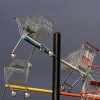
Jumping Down the Road to Cancer.
about 13 years ago - No comments
Lying dormant in our genomes are millions of jumping genes. Originally discovered by Barbara McClintock, transposons are DNA sequences that can move from one location to another in our DNA. Transposons cause mutations when they jump to new locations, so keeping them from jumping is important. However, although transposons are largely silent, every person probably…
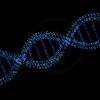
What is Bioinformatics?
about 13 years ago - No comments
Bioinformatics is a relatively new field and as such, many people aren’t exactly sure what “bioinformatics” really is. The NIH Biomedical Information Science and Technology Initiative defines bioinformatics as: “Research, development, or application of computational tools and approaches for expanding the use of biological, medical, behavioral or health data, including those to acquire, store, organize,…
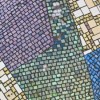
When is a clone not a clone? When it’s a mosaic.
about 13 years ago - No comments
For the last decade or so, progressive cancer treatments involved taking samples of tumors, testing the cells to determine the genetic makeup, and then prescribing medicines targeted to specific mutations. There are many benefits to this approach, but it doesn’t always work. It turns out that tumors aren’t uniform; they are mosaics of cells that…

Jumping genes in your brain?
about 13 years ago - No comments
Mobile chunks of DNA that walk their way from one position in the genome to another may affect neurological diseases and could have subtle influences on normal brain function and behavior, according to a recent study in Nature. Alu is an example of a so-called “jumping gene” – a transposable DNA sequence that “reproduces” by…
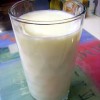
Evolution – Got Milk?
about 13 years ago - No comments
After asking students during a lesson on mutations if it is possible that a mutation in DNA could be good, most students will nod yes without much understanding. Recently, I finally had one student raise his hand immediately and answer the question (with extreme surprise that no other students were blurting out the answer)…”evolution!” He…
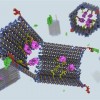
What do you get when you cross an immunologist, a nanotechnologist, and a geneticist? A DNA nano-robot!
about 13 years ago - No comments
Welcome to the world of nanobiotechnology and translational research… In a brilliant example of multidisciplinary research, Harvard Medical School’s Shawn Douglas, Ido Bachelet, and George Church combined forces to build nanostructures that would mimic the body’s immune system to recognize cancer cells and trick them into self-destructing. Their research is published today in Science but…
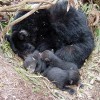
Hibernation – Why Not Me?
about 13 years ago - No comments
It’s the season of hibernation, something I’ve always wished I could do. Oh, to wrap up in a ball, sleep away the winter, and wake to a beautiful spring day – like Bambi! Although the thought has always intrigued me, it never really occurred to me what a feat hibernation actually is. It turns out…
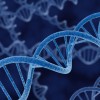
Controlling gene expression through diet
about 13 years ago - No comments
Epigenetics is the study of chemical reactions that control the on and off switch of genes at specific times and the factors influencing them. Environment is a factor that influences epigenetic change which may encompass behavior, stress or diet. The easiest of the three to make observations from is diet. When we think of food,…
DNA in a cup of water
about 13 years ago - No comments
In the movie, “Signs”, one of the characters, Bo, has an interesting habit of leaving half-full glasses of water lying around the house. To Bo, the water “tastes funny” after she drinks only a few sips of it. This odd habit becomes instrumental in the story’s ending. (I will not spoil it for those of you…
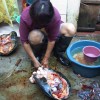
A virus in my meal?
about 13 years ago - No comments
Could the meat in your plate pose a health risk for you? If the animal where it came from was properly raised and handled, and the meat went through a sanitary inspection before reaching your plate, there is little chance it can cause you a health problem. But, what could happen if a sanitary authority has…
